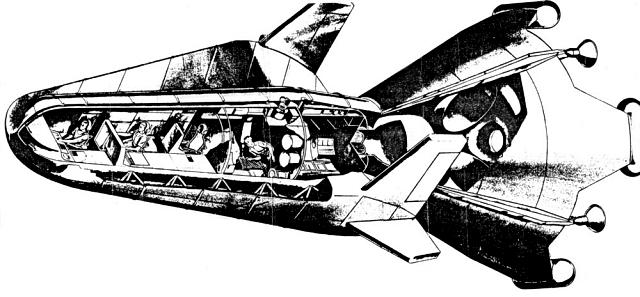Although currently, NASA is the key entity that deals with all space technologies and programs in the U.S. today, it used to be different in 1950s and 1960s. Back then, United States Air Force (USAF) had a close eye on space explorations. In 1967, USAF proposed LUNEX, a space program meant to land men on moon and bring them back home.
LUNEX was a project that was way ahead of its time. It was a time when most of the space exploration technologies and vessels that we know today didn’t exist or hadn’t been envisioned yet. LUNEX was an extra-ordinary program because it provided a very detailed map of how a lunar program could be carried out.
The LUNEX aircraft:
According to USAF’s proposal, LUNEX was to use a three-stage rocket. The three-stage rocket, USAF said, could easily land a person or more on the moon with the help of a soft landing. The key part of the LUNEX hardware was the Earth return vehicle.
The Earth return vehicle was a hardware module which contains a number of sub-systems such as navigation, oxygen supply, temperature control etc. It was envisioned as an environment where astronauts can live and travel without requiring bulky suits.
The shape of the return vehicle, as nuanced in USAF’s proposal, was triangular together with a somewhat flat bottom. This structure was given to the vehicle to enable its use as a lift re-entry vehicle. It was to carry a total payload of some 134,000 pounds, a payload weight that sounded impossible back in the days.
The mission:
USAF worked out the details of LUNEX rather meticulously. The Air Force proposed that LUNEX was to comprise of six stages: Earth ascent, Earth-Moon transit, Lunar descent, Lunar ascent, Moon-Earth transit and Earth reentry. For each of these stages, USAF devised redundancies and checks. This was done to ensure that each stage of the mission went forward without any problems.
Why LUNEX is significant?
LUNEX is very significant today because the structure of the vehicle envisioned in the LUNEX program as well as other details of the mission were futuristic. It somehow foresaw the same technologies and methods which NASA was forced to use later for safe space missions. USAF essentially devised a proposal which was too far ahead of its time, which led to its dismissal.
Had LUNEX been approved back then, US may have been able to score a distinct superiority over Russians in the space race. But the country had to give space exploration in NASA’s hand in an attempt to turn the space race into a civilian research project rather than a military ambition. The decision proved fruitful in the long-run.
Courtesy: PopSci
[ttjad keyword=”apple-tv”]




